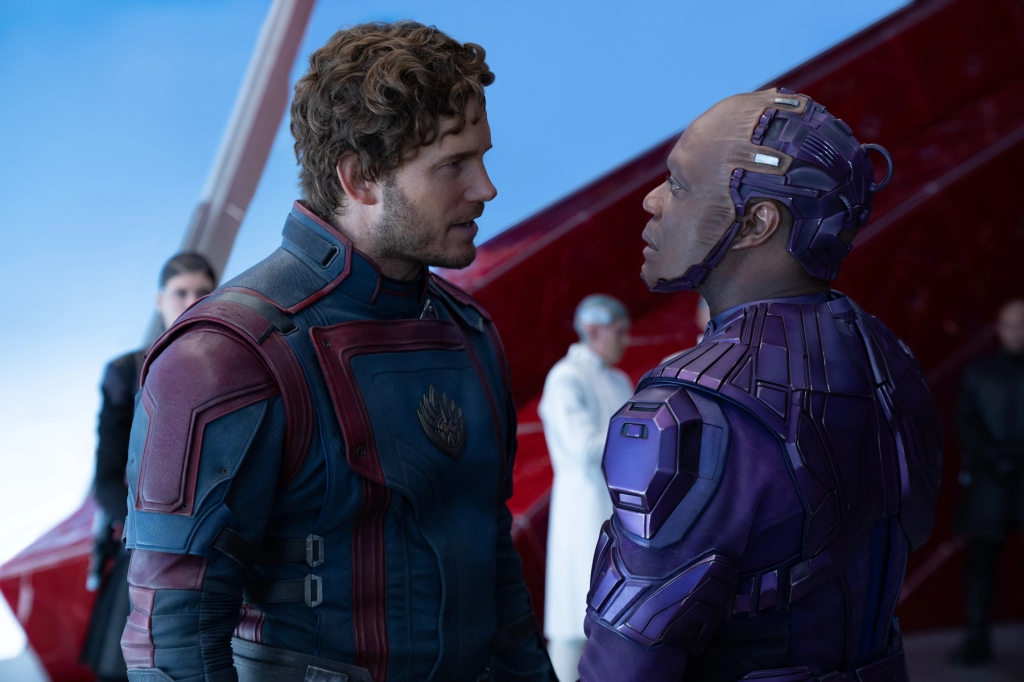In this section of our Colossus Movie Guide for Guardians of the Galaxy Vol. 3, we look at important motifs that help us understand the film.
Cast
- Peter Quill (Star-Lord) – Chris Pratt
- Gamora – Zoe Saldana
- Rocket – Bradley Cooper
- Nebula – Karen Gillan
- Drax – Dave Bautista
- Mantis – Pom Klementieff
- Groot – Vin Diesel
- Adam Warlock – Will Poulter
- Kraglin – Sean Gunn
- High Evolutionary – Chukwudi Iwuji
- Lylla – Linda Cardllin
Important motifs in Guardians of the Galaxy Vol. 3
Animals
Gunn’s Guardians movies have always placed an emphasis on the misfit and the idea of redemption and value beyond our mistakes. Vol. 3 takes this to another level. Its villain only wants perfection. Anything less is disposable. That’s wholly antithetical to the ethos of the Guardians and their found family. While the previous films emphasized the value of people, Vol. 3 extends this idea to animals. One of our favorite characters, Rocket, was a simple raccoon. Given the opportunity, he becomes so much more.
So while there’s an initial emphasis by the Guardians to save the children High Evolutionary had captive, Rocket emphasizes also saving the animals. Because they too deserve grace and fair treatment. The superpowered dog Cosmo plays an important role in Kraglin’s arc. And Adam Warlock adopting the orphaned pet Blurp is the beginning of a change to his character, from villainous to humanized.
Share your thoughts
Are there more motifs you think should be part of the Colossus Movie Guide for Guardians of the Galaxy Vol. 3? Leave your thoughts below and we’ll consider them for the guide.

